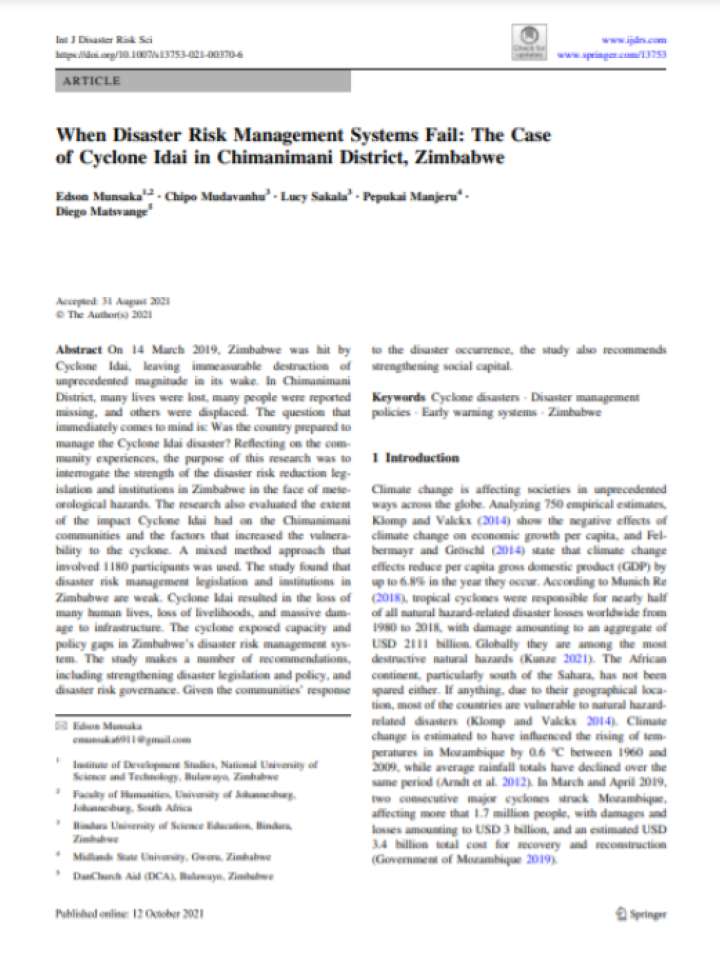When disaster risk management systems fail: The case of cyclone Idai in Chimanimani District, Zimbabwe
This research intends to interrogate the strength of the disaster risk reduction legislation and institutions in Zimbabwe in the face of meteorological hazards. The research also evaluates the extent of the impact Cyclone Idai had on the Chimanimani communities and the factors that increased the vulnerability to the cyclone. A mixed method approach that involved 1180 participants was used. The cyclone, which hit Zimbabwe on March 14, 2019, left immeasurable destruction of unprecedented magnitude in its wake. In Chimanimani District, many lives were lost, many people were reported missing, and others were displaced.
The study found that disaster risk management legislation and institutions in Zimbabwe are weak. Cyclone Idai resulted in the loss of many human lives, loss of livelihoods, and massive damage to infrastructure. The cyclone exposed capacity and policy gaps in Zimbabwe’s disaster risk management system. In particular, informants revealed that land not suitable for human settlement were allocated to housing and government offices. The country's disaster risk management legal and policy framework has also not kept abreast of international frameworks. Informants further revealed that a lack of financial and human resources meant that disaster risk management plans were not implemented. Early warning systems failed to inform affected communities of the scope of the hazard. To prepare against future hazards, builders must adhere to building codes, government plans must incorporate an adequate understanding of risk, and disaster risk legislation must keep in step with international frameworks.
Explore further
